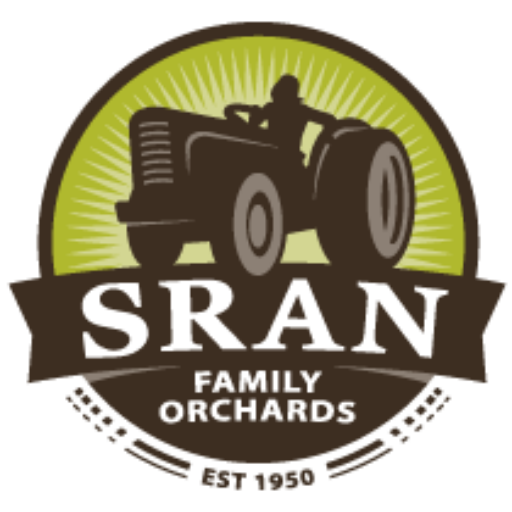A Team of Farmers Protecting and Supporting Pollinators
Bee Friendly Farming
Sran Family Orchards is the first recipient ever of the prestigious Bee Better Certification for its commitment to sustainable, bee-friendly farming practices. The Bee Better Certified mark is awarded by the Xerces Society for Invertebrate Conservation through Oregon Tilth.

The mark identifies innovative farmers and food companies that model ways to support bees, butterflies, and other beneficial insects on agricultural land. It also gives consumers confidence that their purchasing decisions benefit pollinators and the farmers working to protect them.
Sran Family Orchards is a proud Bee Friendly Farm. We are striving to re-introduce native bees in order to protect our environment and sustain our food supply. We use Blue Orchard bees for pollination throughout our almond orchards. These are efficient bees that are able to work in colder, windier conditions than honey bees.




- No-till and no pesticide application approaches
- Keeping a growing cover crop down the alleyways between the trees
- Planting an organic seed mix with untreated conventional seed, when organic seed could not be sourced
- Installing an innovative drip system for year-round access to fresh water
- Xercess third party certification
Based on our extensive pollination program, we have been certified by Pollination Partnership (pollinator.org) as a Bee Friendly Farming operation.


As the largest organic almond grower and processor in the world, we are constantly looking at ways to improve all aspects of the operation. We recently started working with Project Apis m. to expand our pollination program to establish extensive hedge rows with a mix of blooming flowers and shrubs to provide a continuous source of nectar.
Sran Family Orchards is a multi-generational family that has been farming organic crops since 1974 and organic almonds since 2005.
As a Bee Friendly Farm, we have gone above and beyond with our approach to planting habitat for bees. We not only look out for the honey bees when they are brought in for pollination, but we have created a year-round habitat for the native bees as well. We have worked extensively with Project Apis m. on developing our habitat program. Within our habitat, we use 13 different varieties of plants that bloom at different times throughout the year so there is a continuous source of pollination. All the plants are native to California and drought tolerant. They are also selected for their pest management properties. Integrated Pest Management (IPM) is a process of pest control that minimizes risks to the environment and humans. Along with these plants, we also plant a cover crop between the tree rows. The cover crop provides nutrients critical to bee health and increases soil fertility and water availability.
At Sran Family Orchards, we know that water conservation needs to be at the forefront of our farming practices. We have reduced applied water by 18% and reduced irrigated hours and pump usage by 9%. Through a Validated Nutritional Management program, we have also reduced applied fertilizer requirements by 26%.
The National Association of Conservation Districts (NACD) and Pollinator Partnership (P2) recognizes individuals and families in the farm and ranch community who have contributed significantly to pollinator species protection and conservation. Lakhy Sran, of Sran Family Orchards, is the proud recipient of the 2016 U.S. Farmer-Rancher Award.
As a grower and processor, Sran Family Orchards fully recognizes how important a healthy bee population is to our success and will continue to champion Bee Friendly Farming!

Blue Orchard Bees
Almonds rely on bees to transfer pollen from one flower to another. When pollen from a different tree lands on a receptive flower, the pollen fertilizes the ovule and a nut is produced. Honey bees have been the primary pollinator for almonds and other crops for many decades. Research has shown though, that when more than one species of pollinator is present in an orchard, pollination is improved. In the 1970s, USDA researchers from Logan Utah discovered that a native, solitary bee was present in many fruit orchards throughout the western US naturally. This bee is called the blue orchard bee or Osmia lignaria. It is a mason bee, which means that it uses mud to form its nests. This bee makes its nests in existing cavities in wood in the wild, but it will also nest in paper tubes, cut reeds, or grooved wooden boards. When the bees hatch, they mate and then females go to work visiting flowers for nectar and pollen. The bee gathers the pollen and takes it back to its cavity where it is worked into a dough ball with a little nectar. When the ball is big enough, the bee turns around and lays an egg on it. The mother bee then seals off the compartment with mud and starts a new cell. A six-inch cavity will usually house 5 or 6 offspring cells. Males are more numerous than females, but it is the females that do all the pollinating. A female can visit up to 1900 flowers in a day as she gathers provisions for one offspring. The adult bees live 5 to 6 weeks, but the offspring continue to develop and will be the source of next year’s bees. These bees have only a single generation per year and only 300 nesting females are needed per acre for good pollination. Sran Family Orchards is proud to be an early adopter in utlizing this native, solitary bee in its orchards to help diversify the spectrum of domesticated bee pollinators, and improve almond yields.
